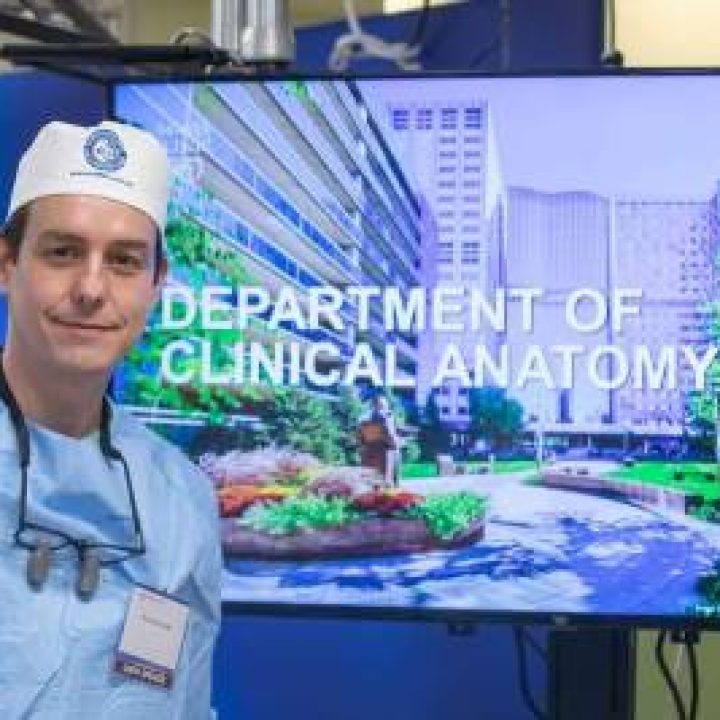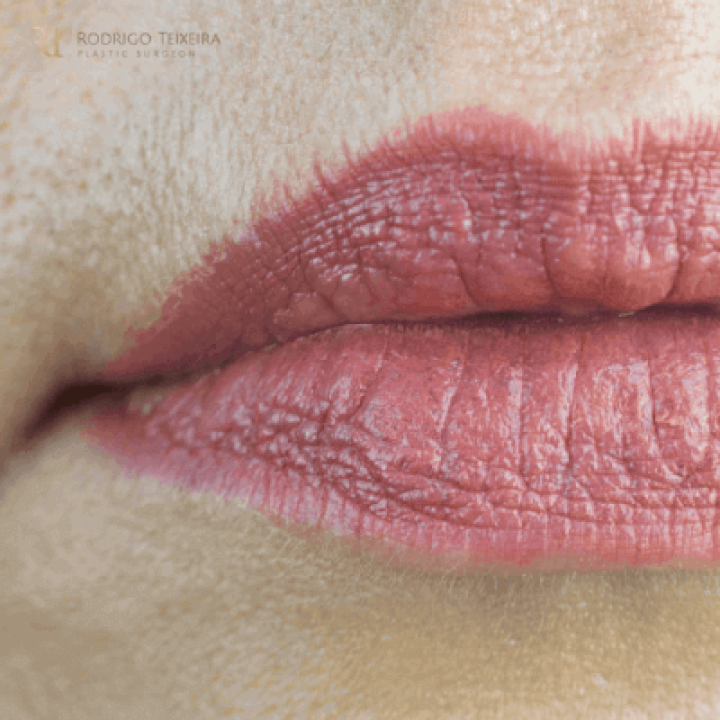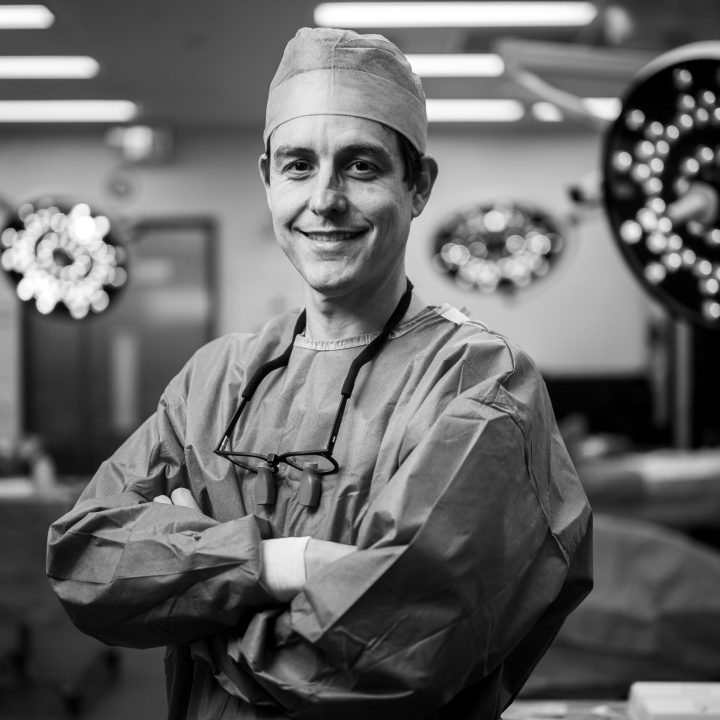Brow Lift (Browplasty Surgery) in Melbourne
A browplasty, or brow lift, is a surgical procedure that aims to address changes in the position of the eyebrows that can occur with ageing or genetics. This procedure may help improve the appearance of the upper face by repositioning tissues to create a more balanced look. At our clinic, Dr Rodrigo Teixeira will discuss your individual concerns and goals during a consultation and explain the potential benefits and risks. As with any surgical procedure,
What Is Brow Lift (Browplasty Surgery)?
The position of the eyebrows and forehead significantly influences facial expression. Over time, or due to individual anatomy, the brow may descend, often contributing to a heavy upper eyelid appearance and deepening forehead lines. This can result in a tired or stern expression in some individuals. Browplasty, also referred to as a brow lift, is a procedure performed to reposition the brow and reduce the appearance of forehead creases. The aim is to improve the relationship between the brows, eyelids, and forehead contour.
This surgery differs from other procedures like facelifts, which addresses the mid-to-lower face, and from blepharoplasty (eyelid surgery), which focuses specifically on eyelid skin and fat. Brow lift surgery specifically targets the brow and forehead, making it an option for those concerned with a naturally low brow position, asymmetry, or upper facial ageing.
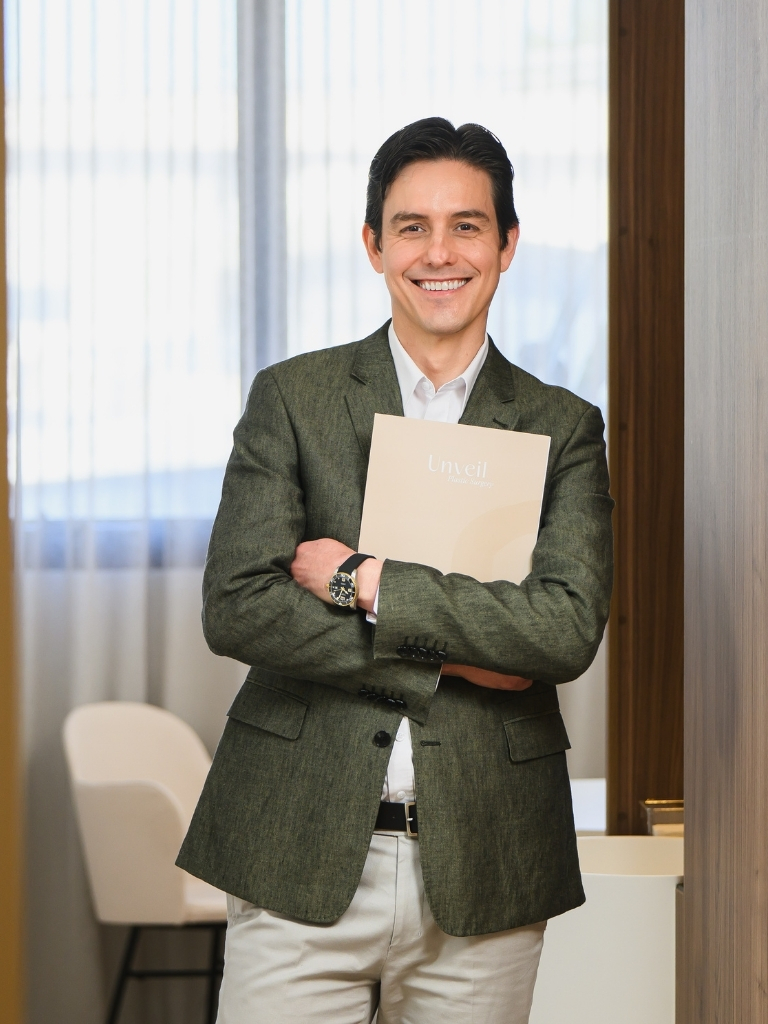
Learn more about Dr Rodrigo Teixeira and his approach to plastic surgery and patient care.
Browplasty Techniques
Brow lift surgery, or browplasty, involves a range of techniques designed to elevate the position of the eyebrows, smooth forehead lines, and restore upper facial balance. The choice of technique depends on individual anatomy, hairline position, degree of brow descent, and surgical goals. Below is a summary of the most recognised approaches:
Endoscopic Brow Lift
The endoscopic brow lift uses small incisions hidden within the hairline. Through these incisions, a thin camera (endoscope) is used to visualise the underlying structures, allowing the surgeon to release and elevate the forehead and brow tissues
This approach is often associated with smaller scars and shorter recovery times compared to open techniques. It is commonly selected for patients with mild to moderate brow descent, as it focuses on lifting tissues while preserving a natural appearance.
Subcutaneous Brow Lift
A subcutaneous brow lift involves making an incision at or just behind the hairline to directly access the brow tissues. By lifting and re-draping the forehead skin, this approach provides stronger correction for individuals with more pronounced brow ptosis or deep forehead lines. It allows for detailed adjustment of brow contour and symmetry. Although it has a larger incision than endoscopic techniques, it is usually concealed within the hairline, and the method provides reliable and long-lasting results.
Gliding Brow Lift
The gliding brow lift technique repositions brow tissues along a carefully developed dissection plane, often incorporating haemostatic net sutures to improve tissue control and minimise post-operative bleeding. It allows for controlled elevation of the brow and can be customised to each patient’s anatomy. The gliding approach is designed to achieve a smooth contour and support predictable healing, making it suitable for individuals seeking a natural outcome without excessive skin excision.
Coronal Brow Lift
The coronal brow lift uses a long incision running across the scalp, typically from ear to ear. This method provides wide exposure of the forehead and is effective in repositioning the brow when more significant lifting is required. It offers substantial and stable results but is associated with longer recovery times, and a higher likelihood of post-operative numbness. The coronal approach is generally reserved for cases where a more comprehensive correction is needed and where hairline position allows for discreet scar placement.
Hairline-Lowering Brow Lift
The hairline-lowering variations of the brow lift, also referred to as pretrichial brow lift, are designed for individuals who wish to reduce the height of the forehead rather than address hair loss. This technique involves an incision along the hairline, allowing the forehead skin to be advanced downward while lifting the brows.
Dr Teixeira’s Surgical Approach to Brow Lift Surgery
Dr. Rodrigo Teixeira (MED0001650480) is a specialist plastic surgeon with FRACS accreditation and extensive experience in aesthetic and reconstructive facial surgery. His approach to brow lift surgery is evidence-based and personalised, prioritising patient safety and natural, harmonious outcomes.
Dr Teixeira performs brow lift procedures using techniques such as endoscopic visualisation and secure fixation methods to support precision and stability. Each procedure is supported by a skilled surgical and nursing team to provide comprehensive, patient-centred care. He holds specialist registration in surgery (plastic surgery), maintaining transparency and adherence to the highest professional standards.
What to Expect at the Brow Lift Surgery Consultation
During a brow lift consultation, Dr. Teixeira will assess your suitability for surgery by reviewing your medical history, personal goals, and conducting a photographic analysis. The discussion will include treatment options, recovery timelines, potential risks, and expected outcomes to support informed consent.
In line with AHPRA guidelines, motivations for surgery are explored, and screening for psychological conditions such as Body Dysmorphic Disorder (BDD) is performed. A GP referral is required, and a seven-day cooling-off period applies before scheduling any cosmetic surgery.
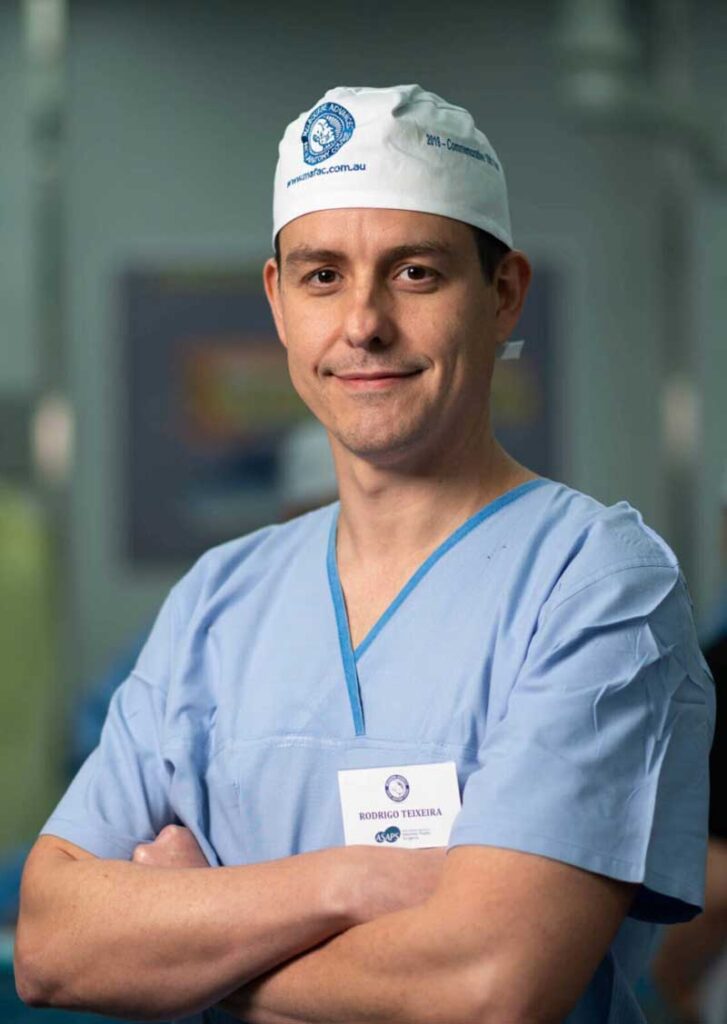
Risks and Considerations of Brow Lift/Forehead Surgery
As with any surgical procedure Brow lift involves risks and individual outcomes can vary. While many patients experience a safe and satisfactory recovery, results cannot be guaranteed.
General surgical risks include scarring, bleeding, infection, delayed healing, anaesthesia-related complications, and the potential need for revision surgery. Temporary effects such as bruising, swelling, and numbness of the scalp or forehead are common and typically resolve within a few weeks.
Procedure-specific risks for brow lift surgery may include:
- Hairline changes, including elevation or irregularity depending on the technique used.
- Scalp numbness or altered sensation, which may be temporary or, in rare cases, prolonged.
- Brow asymmetry, which may result from healing variation or muscle imbalance.
- Injury to the facial nerve branches, potentially affecting forehead movement or eyebrow position.
- Visible or widened scars, especially in patients prone to keloid or hypertrophic scarring.
- Contour irregularities or overcorrection, which may affect the natural appearance of the forehead or brow.
Dr. Teixeira employs careful pre-operative planning and surgical technique, and close post-operative monitoring is integral to minimising complications and supporting recovery.
What to Expect During Recovery & Aftercare Following Browplasty (Brow Lift Surgery)
Recovery after brow lift surgery depends on the technique used and individual healing factors. Swelling, bruising, and temporary numbness are common in the first 1-2 weeks. Endoscopic brow lifts generally have shorter recovery times due to smaller incisions and less tissue disruption, while open techniques may involve a longer healing period and more noticeable initial swelling.
Most patients return to work or light activities within 7-14 days, though full recovery may take several weeks. Strenuous activity should be avoided for at least three weeks or as advised. Some numbness or tightness across the scalp or forehead may persist during the healing process.
Dr Teixeira provides a tailored aftercare plan, including follow-up and monitoring to support safe recovery and manage any concerns.
General Browplasty (Brow Lift Surgery) Recovery Recommendations
- Gently cleanse the face with non-irritating, fragrance-free products. Avoid rubbing or applying pressure near incisions.
- Apply cold compresses or approved cooling devices (e.g. Hilotherm) intermittently during the first 72 hours to help reduce swelling and bruising.
- Keep the head elevated while resting or sleeping, ideally at a 30–45 degree angle, to reduce swelling and promote fluid drainage.
- Refrain from vigorous exercise, heavy lifting, or bending over for at least two weeks, or as advised based on your surgical plan.
- Stay well-hydrated and maintain a balanced, protein-rich diet to support tissue healing and reduce the risk of bruising.
- Avoid smoking and alcohol during the early recovery phase, as both can impair wound healing and increase the risk of complications.
- Follow all post-operative instructions provided, including wound care, activity restrictions, and medications.
Our Melbourne Clinic
Unveil Plastic Surgery is situated in Ivanhoe East, approximately 10 km from Melbourne’s central business district. Our clinic, located on Lower Heidelberg Road, has been designed with patient comfort, privacy, and a calm atmosphere in mind. Our consultation spaces are equipped with modern facilities to support detailed examinations, planning, and discussion.
When you arrive, our reception team will welcome you and guide you through each stage of your visit. Whether you’re seeing us for an endoscopic facelift consultation, a follow-up, or treatment, we aim to make your experience attentive and personalised. We offer easy parking nearby and strive to make the clinic accessible to all patients. We acknowledge that choosing surgery or any cosmetic procedure can involve complex emotions and decisions. Our clinic team is here to offer clear information, support, and guidance at every step.
Combining Browplasty (Brow Lift Surgery) with Other Procedures
Browplasty can be combined with other procedures, such as facelift surgery, upper or lower eyelid surgery (blepharoplasty), or selected non-surgical treatments to achieve more comprehensive facial rejuvenation and balanced results.
Suitability for combined treatment is determined during a detailed consultation, based on the individual’s facial anatomy, goals, medical history, and safety considerations. All surgical planning is tailored to support balanced, natural outcomes.
FAQs
A brow lift can offer long-lasting improvement, but results vary. Ageing, skin type, and lifestyle factors may influence duration. This is discussed during consultation for individualised advice.
Some discomfort is expected, typically mild to moderate, and is managed with prescribed medication. Recovery measures such as rest, head elevation, and cold therapy are equally important in supporting comfort. Most patients find that their symptoms improve significantly within 10–14 days.
Most swelling and bruising reduce within 10–14 days, allowing a return to light activities. Residual tightness or numbness may persist temporarily. Final results and full healing typically evolve over several months.
Incisions are typically placed within the hairline or natural skin creases to minimise visibility. However, scar appearance varies with individual skin type, healing response, and the type of surgical technique used.
Yes, brow lift surgery is commonly combined with procedures such as eyelid surgery (blepharoplasty) or facelift to address multiple areas of facial ageing. Suitability for combination is assessed during consultation based on individual goals and health factors.
